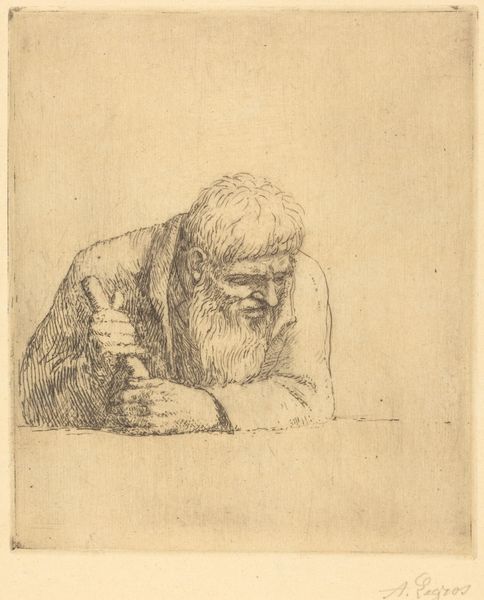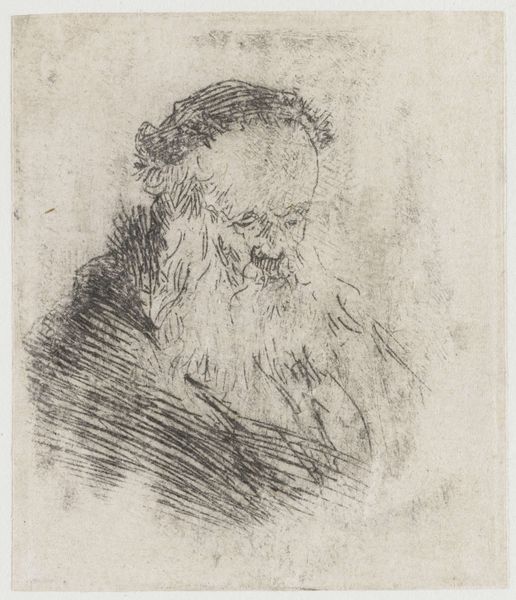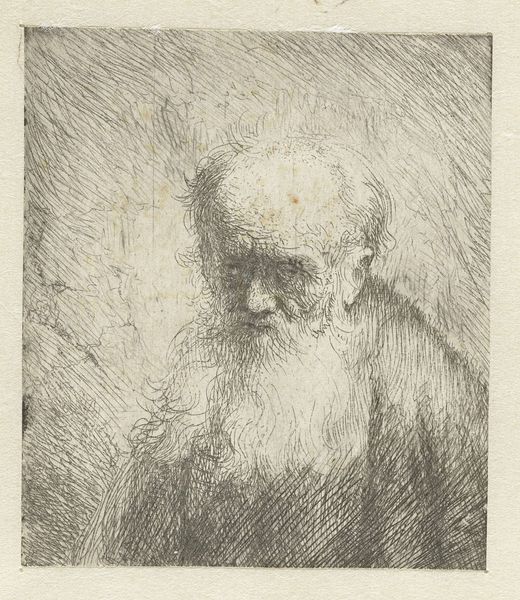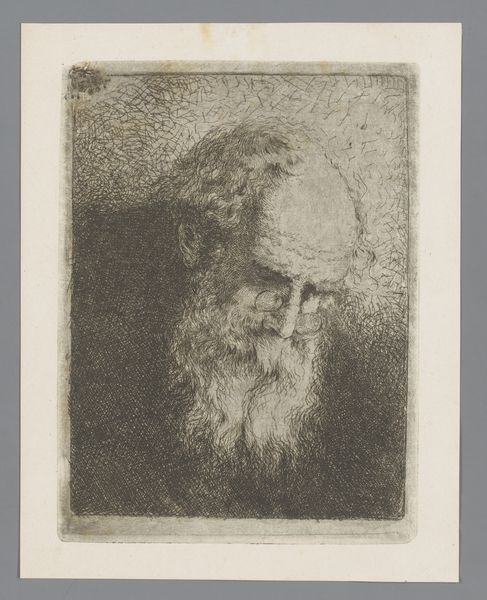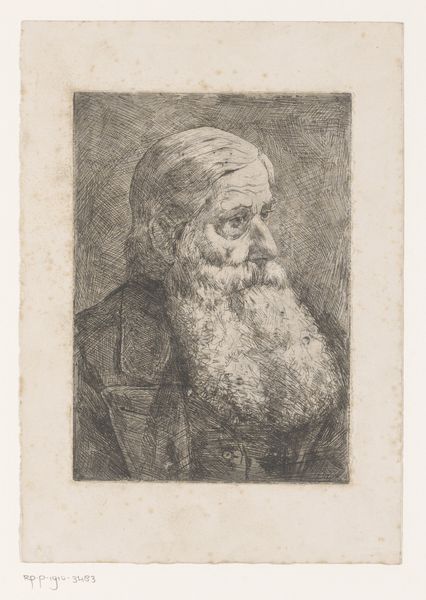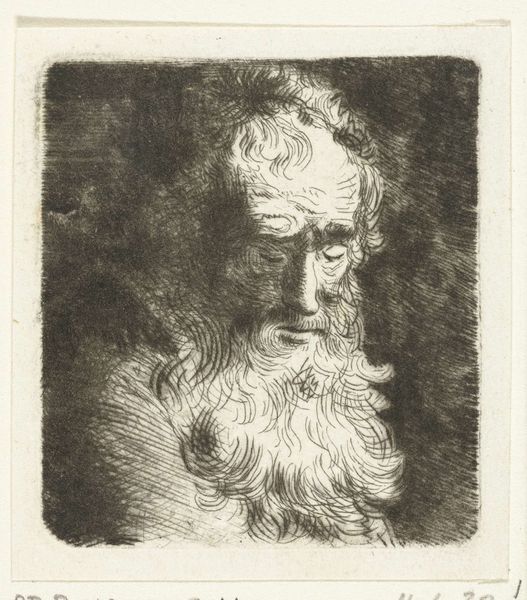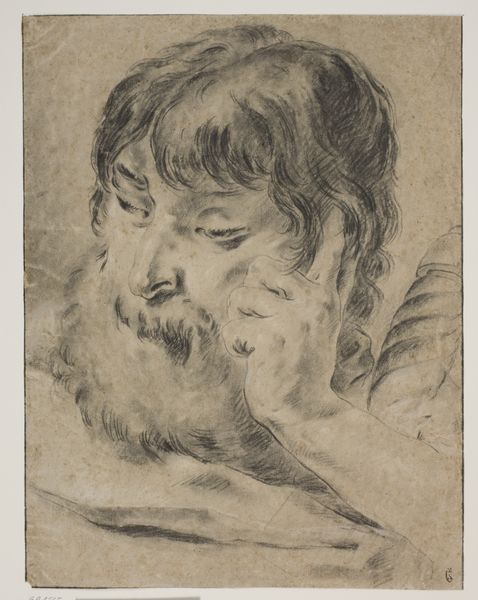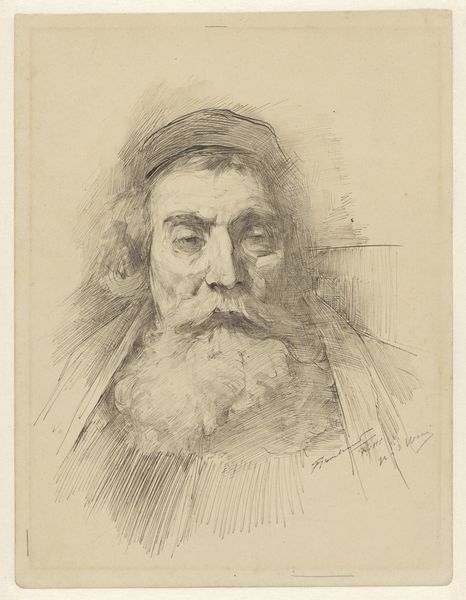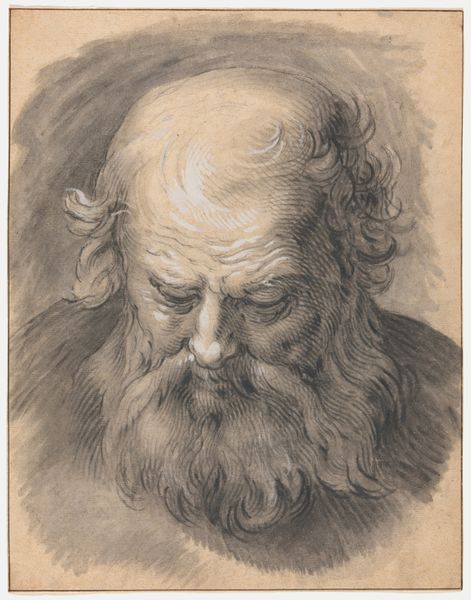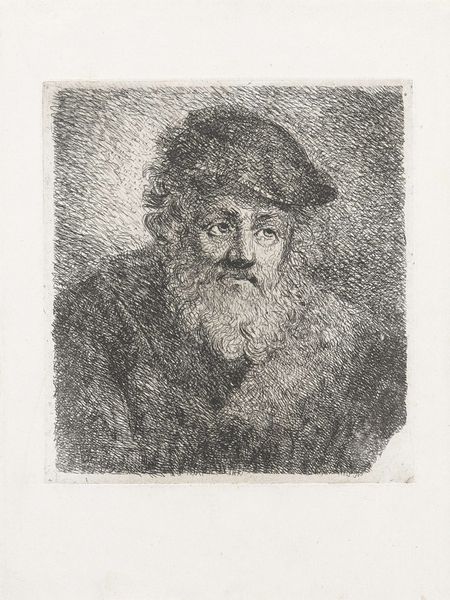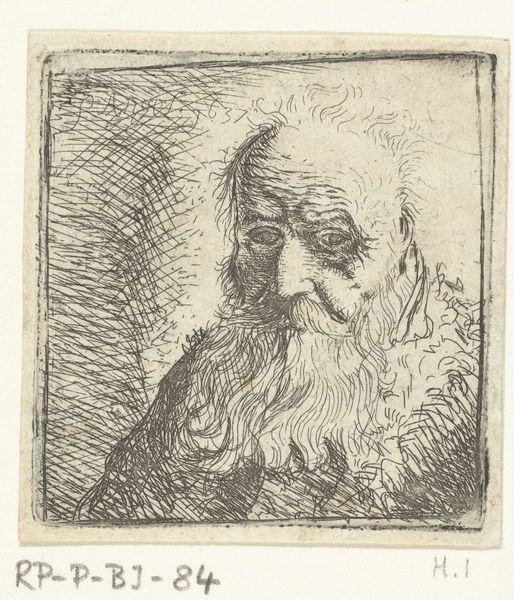
Dimensions: height 90 mm, width 93 mm
Copyright: Rijks Museum: Open Domain
Jan Karel Jacob de Jonge created this print of a praying monk using etching. The magic of etching resides in its capacity for fine lines and tonal subtleties. A metal plate, likely copper, would have been coated with a waxy, acid-resistant ground. The artist then scratches an image into this ground with a needle, exposing the metal beneath. When the plate is submerged in acid, the exposed lines are bitten, creating grooves. Ink is then applied to the plate, filling these grooves, and the surface is wiped clean. Finally, the plate is pressed onto paper, transferring the image. What’s interesting here is that the fine, wiry quality of the lines lends itself to the subject. It gives a sense of the man's age, his weathered skin, and the texture of his humble garments. This is emphasized through the addition of color in specific areas of the print. In this way, the artist shows us a man of labor and devotion, his image deeply intertwined with the labor-intensive process that brought it into being. By appreciating the materials and making of this print, we gain a deeper understanding of the artist's intent, blurring the line between the image and the craft that produced it.
Comments
No comments
Be the first to comment and join the conversation on the ultimate creative platform.


